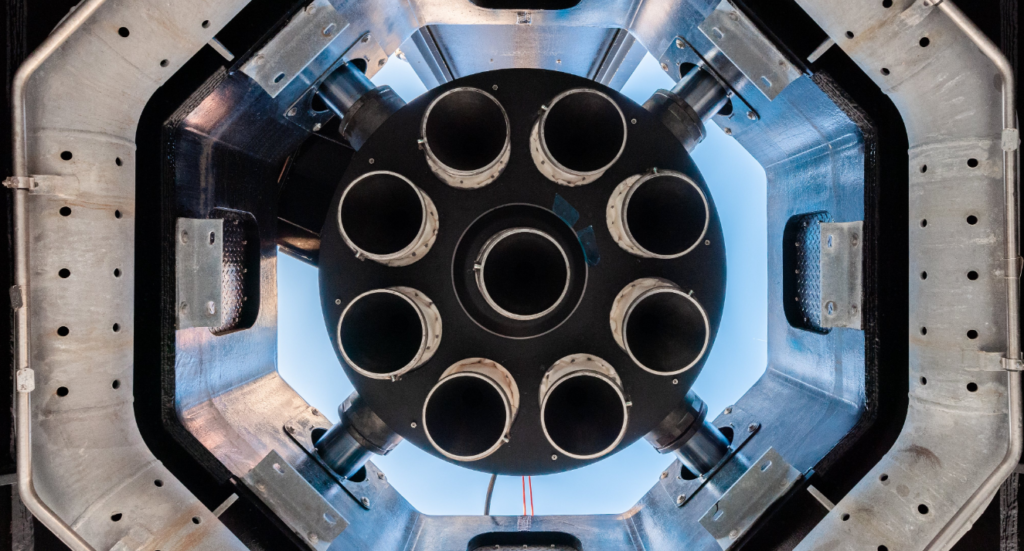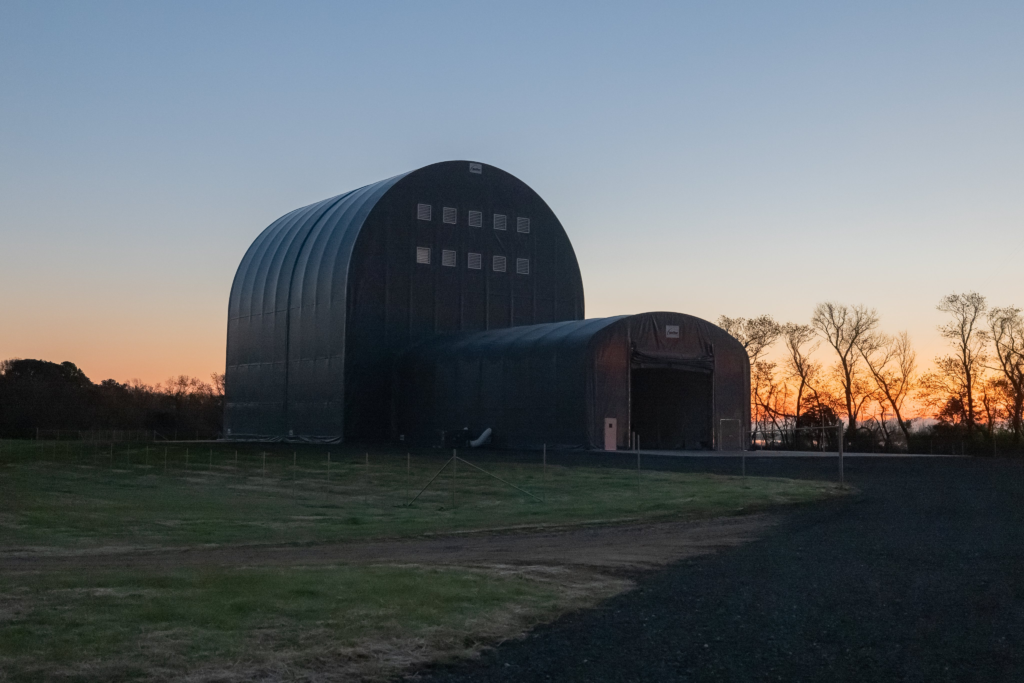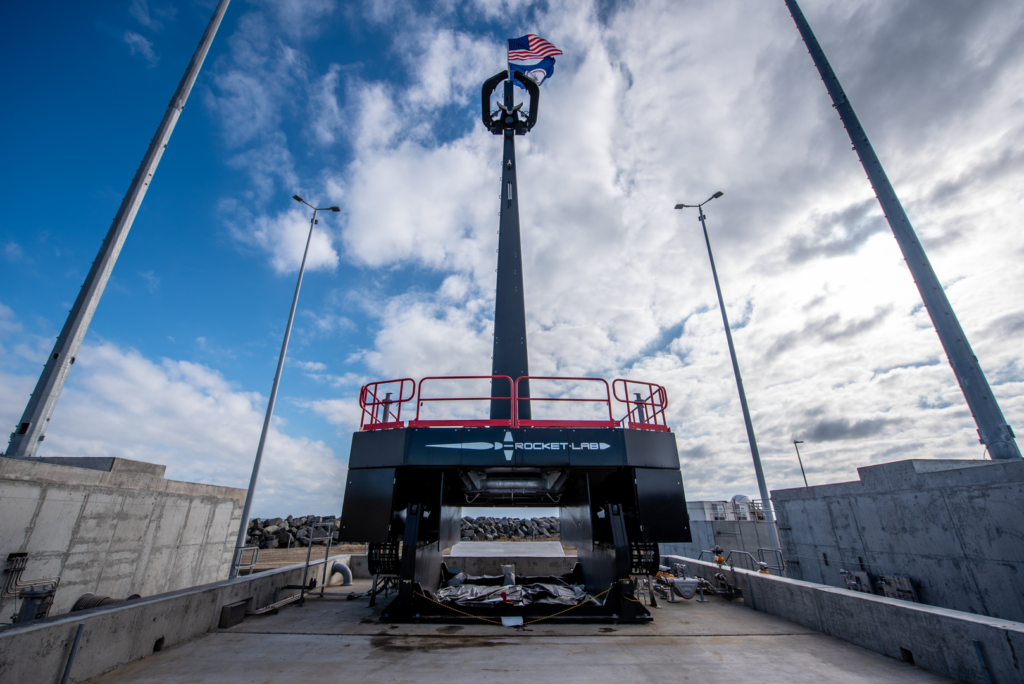
Rocket Lab Is Ready To Launch Electron & Making More Progress On Neutron
For weeks now Rocket Lab has been all hands on deck in preparation for the first Electron launch from Launch Complex 2. This comes in addition to more progress nearby on Neutron and its future facilities. While there have been a few delays due to various reasons, this historic mission for the company is scheduled to lift off tomorrow night.
Specifically, a few complications with range availability and weather halted the launch for a couple of days, however, it’s now set to happen on December 16th between 6-8 pm ET. As far as Neutron’s progress, the company just released some new images highlighting some of the construction being done at the site. A promising sign considering the amount of work and infrastructure necessary to facilitate the production and launch of Neutron.
Even tomorrow’s Electron launch is a big step for both rockets as it will mark the first ever launch from the United States and LC-2. Here I will go more in-depth into tomorrow’s milestone launch, the progress with Neutron, why both are so important to Rocket Lab’s future, and more.
Neutron Update

The Neutron launch system is a very big part of Rocket Lab’s future. Just yesterday the company tweeted saying, “As Electron waits patiently on the pad at LC-2 for this week’s launch, the first temporary structure for Neutron vertical tank assembly is taking shape at Wallops too. Neutron development is moving at pace and yes, we have roles open now.” This included an image of the large temporary structure for the rocket. Just over a month prior we saw some of the initial work on this structure before it was finished.
Back in April of this year, Rocket Lab broke ground on the construction of a state-of-the-art rocket production complex where the Company’s Neutron launch vehicle will be manufactured. The 250,000 square foot Neutron Production Complex is being constructed on a 28-acre site adjacent to the NASA Wallops Flight Facility and Mid-Atlantic Regional Spaceport on Virginia’s Eastern Shore. The complex will support Neutron production, assembly, and integration, and is expected to bring up to 250 highly-skilled roles to the region. Construction will also soon begin on a launch pad for Neutron at the southern end of Wallops Island, near Rocket Lab’s existing launch pad for the Electron rocket.
Rocket Lab selected Virginia as the location of its Neutron production complex and launch site due to the location’s ability to support frequent launch opportunities, as well as continued support from Commonwealth of Virginia. Through the development of Launch Complex 2 for Electron and now the Neutron program, Rocket Lab has built a solid partnership with Virginia with support from the Virginia Economic Development Partnership working alongside Accomack County, the Virginia Commercial Space Flight Authority (Virginia Space), and the General Assembly’s Major Employment and Investment (MEI) Project Approval Commission. As part of the Commonwealth’s support for the Neutron program, $30 million has been set aside for infrastructure and operational systems improvements to the Mid-Atlantic Regional Spaceport, along with $15 million from the MEI Project Approval Commission in site improvements and building construction in support of Neutron.
In addition to progress in Virginia, we also recently saw Rocket Lab cut the ribbon for a new agreement for the aerospace company to locate its engine test complex at the Stennis Space Center. Here they are preparing to test Neutron’s Archimedes engine. With the new agreement, the A-3 Test Stand and about 24 surrounding acres at Stennis will be incorporated into the Archimedes Test Complex. Archimedes is Rocket Lab’s new liquid oxygen and liquid methane rocket engine that will power its large, reusable Neutron rocket. Rocket Lab will have exclusive access to use and develop the A-3 Test Stand area, including associated propellant barge docks and buildings. The initial 10-year agreement includes an option to extend an additional 10 years.
Tomorrow’s Launch

Now that we know more about Neutron and its Virginia operations, we can take a closer look at the company’s first ever launch from the United States. Starting December 9th Rocket Lab tweeted mentioning, “Our first launch from Wallops is scheduled no earlier than Dec. 13 between 6-8pm ET. If we have clear skies, those along the East Coast may catch a glimpse of Electron on its way to space.” A few days later they tweeted again pointing out, “New launch date! Our first Wallops launch is now scheduled to launch no earlier than 15 December due to range availability.” Finally, two days ago they tweeted one more time saying, “New Launch Date! December 16. We’re ready on the pad at LC-2 with Electron and @hawkeye360, but with unfavorable weather on the way, plus NASA and FAA working to close out final documentation, we are now targeting no earlier than Dec 16th for launch. Stay tuned for updates!” Thankfully now on the 15th, this date is still a go and the launch is likely to happen tomorrow.
The “Virginia is for Launch Lovers” mission will deploy satellites for leading radio frequency geospatial analytics provider HawkEye 360. It will be Rocket Lab’s first lift-off from Launch Complex 2 at Virginia Space’s Mid-Atlantic Regional Spaceport within NASA’s Wallops Flight Facility – a launch pad developed to support Electron missions from U.S. soil for government and commercial customers. The launch window has been set following recent progress by NASA in certifying its Autonomous Flight Termination Unit (NAFTU) software, which is required to enable Electron launches from Virginia.
Launch Complex 2 supplements Rocket Lab’s existing site, Launch Complex 1 in New Zealand, from which 32 Electron missions have already been launched. This extensive launch heritage already makes Electron the most frequently launched small orbital rocket globally, and now with two launch complexes combined, Rocket Lab can support more than 130 launch opportunities every year, delivering unmatched flexibility for rapid, responsive launch for government and commercial satellite operators. As partially mentioned prior, the launch pad and production complex for Rocket Lab’s large reusable Neutron launch vehicle will also be located at the Mid-Atlantic Regional Spaceport, streamlining operations across small and large launch. Rocket Lab operates an Integration and Control Facility within the Wallops Research Park, a short drive from the pad itself. The facility is home to state-of-the-art payload integration cleanrooms, vehicle processing facilities, and a mission control center.
It’s important to point out that even though this launch site was completed years ago in 2019, it has never seen a launch. The main reason had to do with the NASA Autonomous Flight Termination Unit (NAFTU) software. Specifically, the company ended up getting stuck in a much longer than expected certification process that halted the launch site’s operations. Back in 2020, in regard to these delays, Peter Beck in an interview said, “There’s a very long certification process that, quite frankly, we probably underestimated how long it would take. It’s difficult to predict when the certification will be complete,” he said. “We’re 100% ready to fly other than the paperwork.” Not long after multiple errors were found that needed to be fixed. At the time, engineers said, “We expect that, under the current rate in which we’re developing and correcting the code errors, we should be ready to certify that unit in the first half of ’21.” Unfortunately, this got delayed even further and only somewhat recently was the software and system fully certified and ready for flight.
Autonomous Flight Termination Systems like NAFTU are a key component of the launch range of the future and a mandatory requirement for Department of Defense (DOD) launches beginning in 2025. The system provides a number of benefits, such as wider launch windows, smaller downrange safety corridors that enhance area clearance operations, and reduced need/expense of ground-based systems. NASA said that AFSS will be a game changer for enabling launches from Wallops and decreasing cost for access to space in the future, and NAFTU will be the system that leads this effort for many years to come. “Automated flight safety systems are a game changer for enabling launches from Virginia’s Mid-Atlantic Regional Spaceport at NASA Wallops and decreasing cost for access to space in the future,” said Mercer. “NAFTU will be the system that leads this effort for many years to come.” In Rocket Lab’s case, the system held them back quite a bit but thankfully that is set to change tomorrow.
Here the mission will deploy satellites for radio frequency geospatial analytics provider HawkEye 360. The
mission will be the first of three Electron launches for HawkEye 360 in a contract that will see Rocket Lab
deliver 15 satellites to low Earth orbit between late 2022 and 2024. These missions will grow HawkEye 360’s constellation of radio frequency monitoring satellites, enabling the company to better deliver precise mapping of radio frequency emissions anywhere in the world.
Conclusion
Rocket Lab is working very hard to make progress on both Neutron and Electron. In the last few days, we learned more about Neutron’s facilities and Electron’s first launch from LC-2. Both of which are important steps in the company’s future. We will have to wait and see how it progresses and the impact it has on the space industry.
